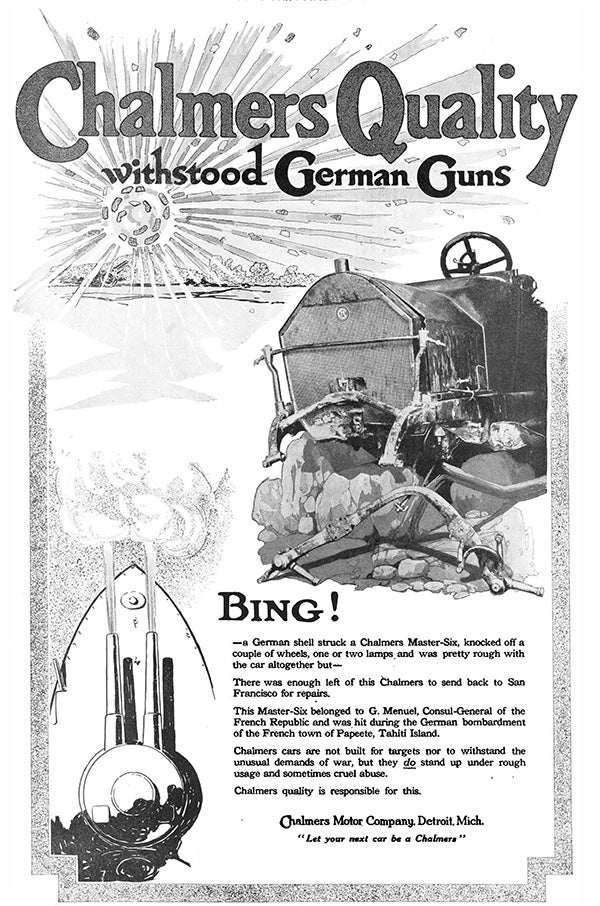This article was published in Scientific American’s former blog network and reflects the views of the author, not necessarily those of Scientific American
Printed in Scientific American, This Week in World War I: June 5, 1915
Early in World War I violence came to the serene island of Tahiti in the Pacific when two German armored warships attacked Papeete, the capital of what is now called French Polynesia. On September 22, 1914, over the course of four hours, the cruisers fired several dozen 210-mm (8.3-inch) shells at the town and harbor, killing three people, sinking a small gunboat and destroying a few buildings. The French had minimal defenses, and could offer little resistance, but at the start of the attack they had set fire to several thousand tons of coal, thus depriving the Germans of fuel that they had hoped to capture for their warships. The German ships were sunk two months later during the Battle of the Falkland Islands.
One result of the bombardment of the town appeared in this advertisement by the Chalmers Motor Car Company, Detroit, which apparently had one of its cars damaged by a German shell (probably one of the big 210-millimeter ones) during the bombardment of Papeete. The car held up well enough that it became a candidate for an advertising campaign by the company. The text on the ad reads:
On supporting science journalism
If you're enjoying this article, consider supporting our award-winning journalism by subscribing. By purchasing a subscription you are helping to ensure the future of impactful stories about the discoveries and ideas shaping our world today.
“BING!
A German shell struck a Chalmers Master-Six, knocked off a couple of wheels, one or two lamps and was pretty rough with the car altogether but there was enough left of this Chalmers to send back to San Francisco for repairs. This Master-Six belonged to G. Menuel, Consul-General of the French Republic and was hit during the German bombardment of the French town of Papeete, Tahiti Island. Chalmers cars are not built for targets nor to withstand the unusual demands of war, but they do stand up under rough usage and sometimes cruel abuse. Chalmers quality is responsible for this.”

An advertisement published in Scientific American on June 5, 1915, used a car damaged in battle in a sales pitch. Image: Scientific American, June 5, 1915
The Chalmers company, known for expensive high-quality cars, ceased production in 1923; the company assets are still owned by Chrysler.
-
Our full archive of the war, called Scientific American Chronicles: World War I, has many articles from 1914–1918 on perceptions of the war and the home front. It is available for purchase at www.scientificamerican.com/products/world-war-i/